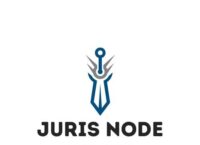In today’s world, where the internet has made transactions possible with a single click, it has also given birth to money laundering, terrorist financing, and many other illegal activities. Therefore, in order to combat these activities, the government has introduced a set of rules and regulations. One of the most important regulations is the implementation of Enhanced Due Diligence (EDD). EDD is a process used by financial institutions, intermediaries, and other reporting entities to identify and verify high-risk customers.
This article will discuss the significance of Enhanced Due Diligence in identifying high-risk customers and its implementation.
What is Enhanced Due Diligence (EDD)?
Due diligence is a process of verifying the identity of clients and beneficial owners, determining the purpose and nature of the business relationship, and identifying and assessing the risk involved. Enhanced Due Diligence (EDD) is a process that requires a higher level of scrutiny and analysis to identify and mitigate the risk of money laundering and terrorist financing activities.
EDD is applicable to clients who are considered high-risk due to their location, nature of business, profession, background, or any other factor that indicates a high probability of money laundering or terrorist financing. It involves a thorough review of the client’s background, business activities, and financial history. It also requires a higher level of verification and documentation.
Why is EDD necessary?
EDD is necessary to protect the reporting entities from potential money laundering or terrorist financing activities. It helps in identifying high-risk customers and mitigating the risks associated with them. It also ensures compliance with regulatory requirements.
Identifying High-Risk Customers
Identifying high-risk customers is an important step in the implementation of EDD. The following are some of the factors that may indicate a high risk:
- Customers located in high-risk jurisdictions or countries that are known for money laundering and terrorist financing activities.
- Customers who are politically exposed persons (PEPs) or closely related to them.
- Customers who are involved in high-risk professions, such as money service businesses, cash-intensive businesses, or charities.
- Customers who have a history of involvement in criminal activities or have been convicted of financial crimes.
- Customers who engage in transactions that are inconsistent with their known financial profile or transactions that are unusual for their business or profession.
- Non-face-to-face customers or those with dubious reputations as per public information available.
Implementing EDD
The implementation of EDD requires reporting entities to take certain steps to identify and verify high-risk customers. The following are some of the steps that reporting entities can take to implement EDD:
- Conduct a risk assessment: Reporting entities must conduct a risk assessment to determine the level of risk associated with their clients. The risk assessment should take into account the factors mentioned above, as well as any other relevant factors.
- Collect and verify client information: Reporting entities must collect and verify client information, including identity, source of funds, and beneficial ownership. The verification process should be more rigorous for high-risk clients.
- Monitor client transactions: Reporting entities must monitor client transactions for any suspicious activity or transactions that are inconsistent with the client’s known financial profile.
- Conduct ongoing due diligence: Reporting entities must conduct ongoing due diligence on high-risk clients to ensure that they continue to meet the requirements of the EDD process.
- Train staff: Reporting entities must train their staff on the EDD process and the identification of high-risk clients. This will ensure that staff members are aware of the risks associated with certain clients and can take appropriate action.
Conclusion
Enhanced Due Diligence is an important process for reporting entities to identify and verify high-risk clients. It helps in mitigating the risks associated with money laundering and terrorist financing and ensures compliance with regulatory requirements. Identifying high-risk customers is the first step in implementing EDD, and reporting entities must conduct a risk assessment and collect and verify client information for high-risk clients. They must also monitor client transactions and conduct ongoing due diligence to ensure that high-risk clients continue to meet the requirements of the EDD process.

By:
Vijay Pal Dalmia, Advocate
Supreme Court of India & Delhi High Court
Email id: vpdalmia@gmail.com
Mobile No.: +91 9810081079




